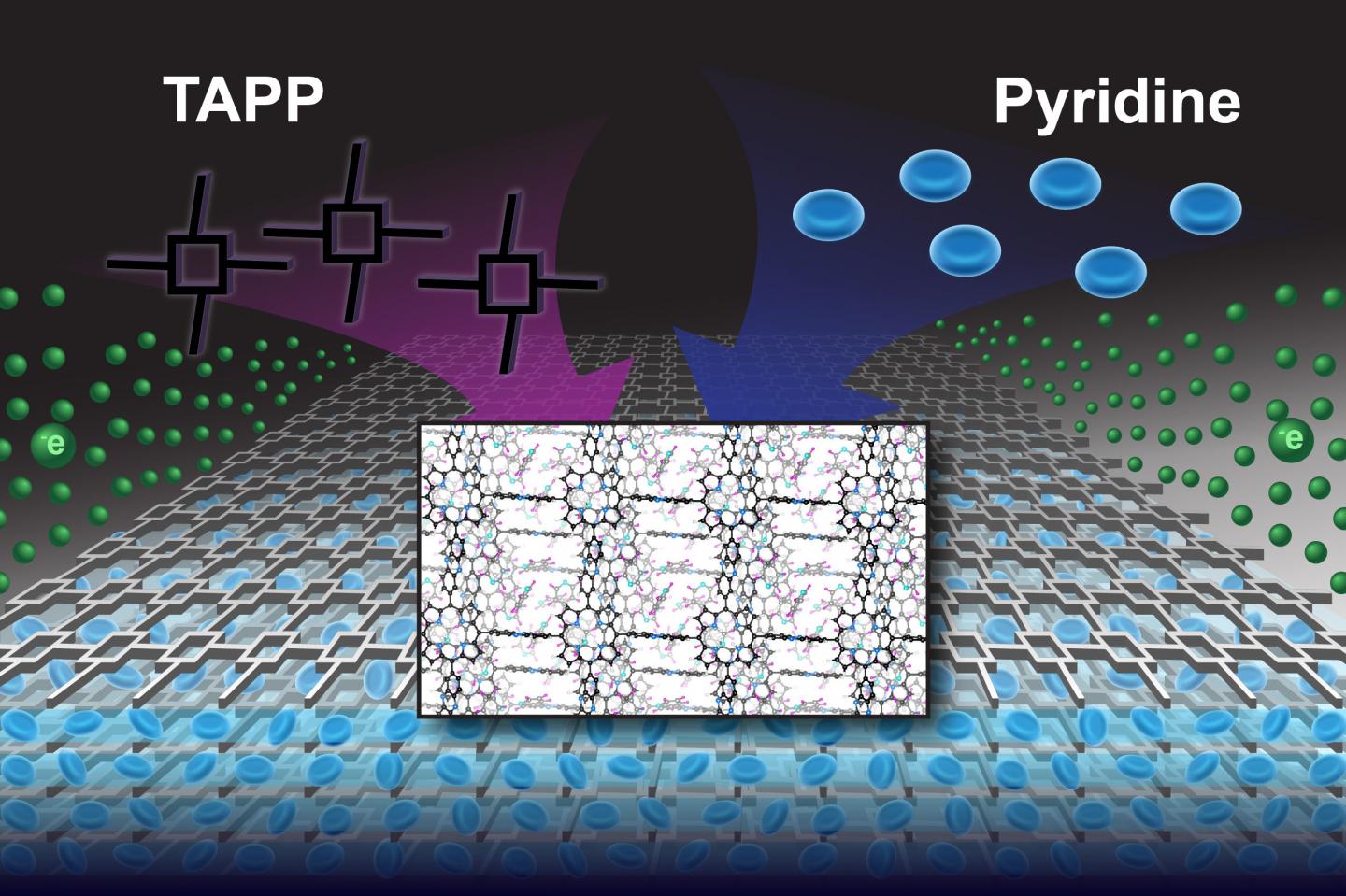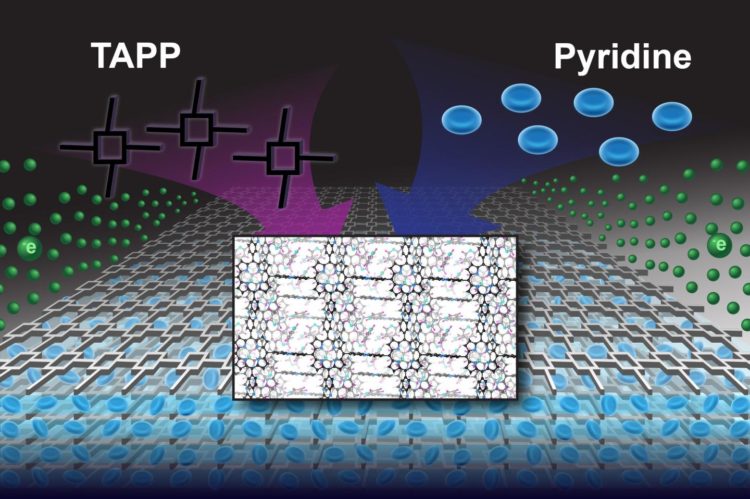
Credit: Felice Macera
When chemists or engineers want to make a new type of material, they head to the laboratory and start “cooking.” Much like trying to improve upon a food recipe, the process involves trying new chemical ingredients or adjusting cooking times and temperatures. But what if instead of relying on a time-consuming process without guarantees of success, scientists could simply “snap” different chemical “pieces” together to make something new?
In a study published in the Journal of the American Chemical Society, a team of researchers from the University of Pennsylvania, University of Nebraska-Lincoln (UNL), Colorado School of Mines, and Harbin Institute of Technology, in China, describes a new approach for synthesizing organic “Legos” that can be easily connected to make new materials. This framework creates structures that are lightweight, porous, and quick to synthesize and easily modified to create new materials with unique properties.
The study focuses on a relatively new structure known as covalent organic frameworks, or COFs. COFs are 2D and 3D organic solids held together with strong, covalent bonds. COFs have crystalline structures made of light elements like carbon, nitrogen, and oxygen, making them lightweight and durable. Like individual Lego pieces, individual chemical building blocks can be assembled in defined ways to form a larger structure that can be planned in great detail instead of putting components into a mixture and seeing what comes out.
The specific building blocks used in this study are known as porphyrins, a family of organic structures found in proteins like hemoglobin and chlorophyll. These structures include a metal atom at their center, and researchers would like to use this reactive atom to create COF materials with enhanced properties. But despite the wide number of potential applications, ranging from hydrogen storage to carbon capture, these types of COFs have practical limitations. Making COFs is a slow process, and it can take several days just to create a gram of material. Existing methods are also only able to make COF in powder form, making them much harder to process or to transfer onto other materials.
With the team at UNL using their expertise in electropolymerization, a method for controlling polymer synthesis on a substrate that conducts electricity, the researchers found they could use electricity to create thin films of COFs. The resulting material, 2D sheets stacked in multiple layers, is lightweight and heat tolerant and take hours to synthesize instead of days. “This method is fast, simple and cheap, and you enable deposition of a thin film onto a variety of conductive substrates,” says Elham Tavakoli, who led the study along with fellow UNL graduate student Shayan Kaviani under the supervision of assistant professor Siamak Nejati. “Through this approach, we can avoid the common challenges with the COF synthesis through conventional solvothermal method.”
After studying the structure of the deposited COFs in more detail, however, the researchers found something they couldn’t explain: The interlayer distances, or how far the 2D sheets were from one another, were much larger than expected. The experimentalists then turned to theoretical chemists at Penn to determine what was going on.
After trying to create a theoretical model that would accurately describe the COF’s structure, Penn postdoc Arvin Kakekhani realized that something must be missing from their model. Kakekhani studied the list of all the chemicals used in the COF’s synthesis process to see if any of the additives might explain their unexpected results. The researchers were surprised to find that a “spectator” molecule, one that they thought only provided the electrochemical environment necessary for the reaction to occur, was an essential component of the COF’s structure.
The idea that a molecule like pyridine, a small organic molecule with a simple ring structure, can help crystals form is not a new concept in chemistry, but it wasn’t thought to be important for COF structure before this study. Now, the researchers have a better understanding of how this spectator fits perfectly within the 2D layers and provides the support needed for the COFs to form a crystal structure. “These smaller pyridine molecules actually go into the material and become part of the crystal,” says Kakekhani.
This new approach is now a starting point for creating numerous types of materials. By changing the reaction conditions and the types of COF building blocks use and by replacing the pyridine with another small molecule, the opportunities for creating new materials with unique properties are endless. “COFs are not that old, so they have lots of undiscovered points,” says Tavakoli. “I’m looking forward to finding more of these myths in this field.”
In the near term, the researchers hope to tune the catalytic properties of synthesized COFs and to develop site-isolated catalysts, substances that increase the rate of a chemical reaction that are essential components of industrial processes. “Our current COF has chemical reactivity, but that can be greatly heightened through small modifications,” says Andrew M. Rappe, Blanchard Professor of Chemistry in Penn’s School of Arts and Sciences. “Our team can take one platform and make many materials with different functionalities, all based on the work reported here.”
“We foresee that the developed platform will allow us to design and realize many functional interfaces not yet explored. A wide range of applications, such as high selectivity separation and efficient catalysis, can be envisioned for these systems,” says Nejati.
Kakekhani emphasizes that the work also showcases the importance of having theorists and experimentalists work in close collaboration. “It was not only about to have something that matches their data,” he says, “but about generating some insight that can make these materials better. It takes two to tango, and if we find a way to use each other’s insight, there is room for discovering new things.”
###
This research was supported by National Science Foundation Grant ECCS-1542182 and U.S. Department of Energy Office of Basic Energy Sciences Grant DE- SC0019281.
Media Contact
Erica K Brockmeier
[email protected]
215-898-8562
Related Journal Article
http://dx.





